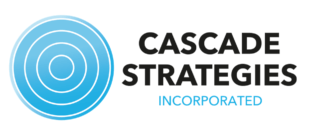
Jul
AI In Market Research: The Story So Far – Chapter 3: A Glimpse Into A Future with AI
jerry9789 0 comments artificial intelligence, Burning Questions
This is the third installment in our series on AI webinars. The inspiration for this series is a simple question about what these AI seminars are saying. There are hundreds of these seminars floating about, all based on the premise that AI technology is here to stay, people are curious about it, and they want to know how it will affect their lives.
We asked one of our staff members to attend several of these AI webinars in pursuit of the answer to this question: what are the AI webinars really saying? What are the common themes, if any? While the first and second chapters focused on AI’s ubiquity and limitations respectively, this third installment focuses on the replacement of humans and human work.
Will Jobs Be Lost Because of AI?
AI is a threat to most jobs including those in the market research industry but this is most especially true with any repetitive or routine work grounded by established knowledge or processes. AI provides the advantages of streamlining your knowledge base and shortcutting processes. If you’re on the process side and you fail to embrace AI, clients might find you costlier and less optimized.
The market research industry had already learned this lesson in the early 2000s when the big companies didn’t take online research seriously. They subsequently found themselves trying to catch up some years later after the widespread acceptance and adoption of online research. Whoever waits too long or neglects to embrace the newest tool would most likely fall behind as the industry shifts towards AI-driven processes.
What are the AI webinars saying about Human Replacement?
This doesn’t necessarily mean that humans would be fully replaced and displaced by AI in market research. AI is, after all, a tool. All tools revolutionize optimization but optimization by definition doesn’t make things better. AI will revolutionize things, but it is not the big revolution that will make everything different.
To illustrate that last point, a question was raised in one of the webinars about the possibility of a data collection tool that can replace surveys. There wasn’t a definitive answer given by the panelists since it’s more of a question of what surveys would actually look like. It would depend on what is wanted to be accomplished, the type of information sought, and how they would engage and elicit reactions.
The subject of AI-powered market research alone attracts investors. Embracing AI would not only optimize your market research processes but it would also add value to your insights. Having said that, AI places everybody on the same playing field, except those who recognize and seize the opportunity to experiment with AI are able to gain an edge. The key would be to build on experience rather than purely on the thirst for innovation; try to be at the front of things, but don’t try to be the first one. Try to find a good balance by going with the flow while making smart moves and decisions.
It’s been noted that the profile of the researcher of the future is a little bit more techy and into IT integration. New business intelligence leaders today have IT backgrounds, and this is different from two decades ago. Even in a world with AI-based market research, there would be room for the human factor that adds value from experience — something AI won’t be able to replace.

Jun
AI In Market Research: The Story So Far – Chapter 2: Limitations of AI
jerry9789 0 comments artificial intelligence, Burning Questions
Despite AI’s expanding popularity in market research, experts are fully aware that there is still a lot of ground to cover regarding their effectiveness and optimization for use cases, along with understanding and mitigating their risks and limitations.
These limitations reveal themselves most especially in efforts to replicate human behavior. One research paper on a survey employing Large Language Models observed how effective these LLMs are in understanding consumer preferences with their behaviors consistent with four economic theories, but noted that there were demonstrations of extra sensitivity to the prompts they were given. In addition, there were indications of positional bias wherein the first concept was selected more often than the others that were also presented.
AI has also been found to be too optimistic, tech-forward, and self-interested. For example, ChatGPT is inherently focusing on maximizing expected payoffs, whereas a person would often act in a risk-averse way for gains and risk-seeking for losses. AI also exhibits a generally higher level of brand association than humans, resulting in higher brand scores. However, it struggles with lesser-known topics, notably in scenarios where new commercial products are tested and targeted toward a specific audience.
While it can be addressed by cautious prompt engineering, AI hallucinations are an unintended effect of the helpful aspect of these models where they generate unnecessary output stemming from patterns or elements they perceived but are nonexistent or imperceptible to human observers.
And while more on the side of risks than limitations, there is an understandably and famously increasing concern from artists over how text-to-image generators threaten to replace them and their work, just as there are certain roles in the market research sector that are in danger of being taken over by AI.
Perhaps the ideal recommendation for utilizing AI while keeping in mind its limitations is to use it in cases where it’s most effective and productive with the understanding that it might excel in one scenario, but it doesn’t mean it will be just as effective in another situation.

May
AI In Market Research: The Story So Far – Chapter 1: Adapt or Get Left Behind
jerry9789 0 comments artificial intelligence, Burning Questions
Whether you like it or not, AI is here to stay. Yes, AI is a threat to most jobs, including those in the market research industry, since it shortcuts processes while optimizing operational efficiency. While market research technology didn’t develop as fast as other industries in the early to mid-2000s, the advent and subsequent mainstream appeal of AI has forced market research to get with the times. You’re in trouble if you fail to embrace it but if you do, you get to be on the winning side.
Experts expressed that we’re still in the early exploratory stages of AI but there is already depth in its application in market research. Take, for example, the humanization of surveys. An interactive and dynamically probing AI improved overall data quality in more than one experiment due to an increased engagement from respondents resulting from a sense of appreciation over the perceived but simulated attention paid to them and their responses during the survey. In the same vein, employing a conversational AI voice has been shown to dramatically drive engagement for better data.
That latter effort to humanize surveys has created an influx of voice responses and content, leading to the new question of what we should now do with all those resources, which would be a byproduct of AI-based solutions. Of course, LLMs and other existing AI models would be employed to help find the answer to this question.
Aside from solving dark data, AI has also displayed impressive capabilities to answer choice tasks, especially performing well with well-known topics and products, even outdoing humans in some surveys where humans get confused or find it hard to render a judgment. It’s also been considered for AI to adapt existing survey data for a new topic to save time. AI’s role in market research might still be experimental at this point, but it has grown to the point where it’s being utilized and adapted to take on one challenge after another.
Our second entry in this four-part blog series highlights some of AI’s risks and limitations, and how understanding and mitigating these factors can lead to their effective and optimal utilization.

May
AI Webinars Are Everywhere – What Are They Really Saying?
jerry9789 0 comments artificial intelligence, Burning Questions
With AI becoming more ubiquitous each passing year, it’s no surprise that webinars dedicated to the subject have been springing up everywhere. Amid the hype, people are either curious, interested, or to some degree invested in what AI’s increasing popularity means for them as well as the industries they’re part of. These webinars serve as the perfect platform for industry experts to share their experiences, thoughts, and opinions on AI’s current and future implications.
What are these AI webinars really saying? We sent one of our staff members in search of the answers. Each webinar talks about the impact of AI on the economy, society, and culture, but they must share some common themes or overarching ideas. What are these common ideas? To get at the answers, we asked our staff member (Emil Deverala) to focus on the impacts on an industry we truly understand: market research.
During April and May 2024, Emil attended three AI webinars: “Market Research in an AI World,” “AI in Marketing Research: Expert Panel Discussion,” and “Building New Business: Five Ways Firms Are Driving New Revenue with Automation And AI.” After each webinar, Emil was asked to not only summarize the items that were discussed, but also share his larger thoughts about what the webinar was really trying to say to the world about what we can expect from AI.
Emil eventually boiled things down to four main ideas or themes. In this series of blogs, we’ll be exploring each of those themes. Here’s the first in our series. It focuses on why people in the market research industry need to pay attention to AI in the first place.



















